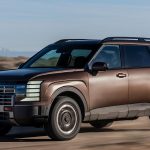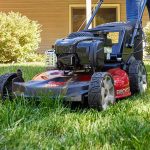These solid choices range from comfortable cruisers to rugged off-roaders
Honda Pilot
By Jon Linkov
A 3-year-old used SUV is likely to have many of the same features as a brand-new model—and even look very similar to it—but one thing it doesn’t come with is as high a price. That’s because the fundamentals of car pricing remain the same: New cars depreciate quickly during the first three to four years of ownership.
This makes used cars a great value. And because these SUVs have already been around for a few years, Consumer Reports can tell you whether a model is reliable or not.
We are able to do this because we use our exclusive survey data, including responses about more than 350,000 vehicles, to identify the most reliable SUVs—so that you can make a smart choice.
The SUVs are listed in alphabetical order by manufacturer within their vehicle category. We also identify when active safety systems, including forward collision warning (FCW), automatic emergency braking (AEB), blind spot warning (BSW), and rear cross traffic warning (RCTW) are optional or standard.
This article is available to CR members.
Two-Row SUVs
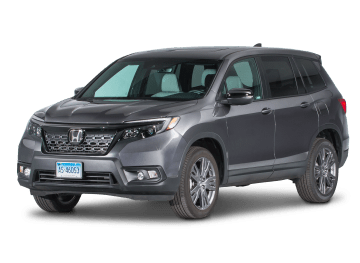
Based on the Honda Pilot SUV, the Passport has plenty of power and a roomy interior. It used the same smooth, refined 3.5-liter V6 engine and nine-speed automatic transmission as the Pilot, and returned 21 mpg overall. However, we found the Passport’s ride to be rather stiff, and it didn’t come with any improvement in handling agility over the Pilot. The infotainment system is rather slow to respond, and the push-button gear selector is tricky to use without looking down. The interior is roomy and full of handy storage places. FCW and AEB were standard, but BSW was available only on the more expensive trims.
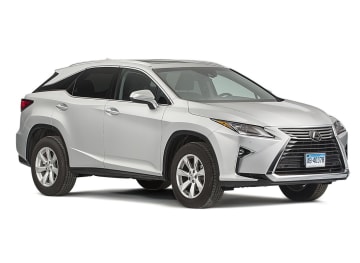
The RX features a smooth 3.5-liter V6 linked to an eight-speed automatic, delivering ample power and a commendable 22 mpg overall. Inside, the RX is very quiet and well-finished. Ride comfort is plush whether you get the 18-inch tires on the base car or the 20-inch tires that come on the higher trims. Handling is ponderous and devoid of any sporty feel, although it is ultimately secure. The mouselike controller and interface require a steep learning curve. Rear passengers get lots of leg and knee room. The 2021 model is the pick of the line since this is the year it got standard BSW; FCW and AEB with pedestrian detection were already standard.

The Nautilus is a refreshed Lincoln MKX and has responsive handling, a comfortable ride, effortless acceleration, a plush interior, and a suite of standard advanced technology, making it a formidable competitor. It came with either a 2.0-liter turbo four-cylinder engine or a 2.7-liter 335-hp V6 turbo, which pulls strongly and effortlessly. It doesn’t take more than a quarter mile to realize this isn’t your grandmother’s Lincoln. The 2.7-liter pulls strongly and effortlessly. In our tests of the MKX with the six-speed automatic, overall fuel economy came in at 18 mpg. With the eight-speed automatic, the Nautilus should see a 1- to 2-mpg bump. 2021 saw the addition of the easy-to-use Sync 4 infotainment system. Another plus is that FCW, AEB, BSW, and RCTW were all standard.
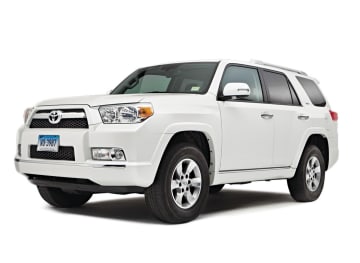
It’s built tough for off-roading, but otherwise the 4Runner falls short of most midsized SUVs. The powerful but rough-sounding 4.0-liter V6 is thirsty, delivering just 18 mpg overall. The ride is unsettled, and handling is clumsy, with noticeable body lean while cornering. A high step-in and low ceiling compromise both the access and driving position. Ground clearance is generous, and underbody skid plates are standard. The part-time 4WD system includes a low range for challenging off-road conditions; Limited trims get a 4WD system that can stay engaged indefinitely. We like the easy-to-use controls, which feature big buttons and knobs. The power-retractable rear window is handy. FCW and AEB with pedestrian detection were standard, but BSW and RCTW were not available in 2021.
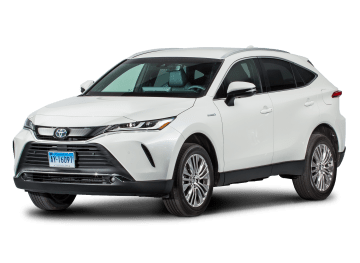
Toyota reintroduced the Venza name 2021, applied to a hybrid SUV that used the RAV4 Hybrid powertrain. It’s a pleasant enough vehicle, but other than an excellent 37-mpg overall, it didn’t stand out in the midsized segment. The 2.5-liter four-cylinder engine and electric drive yield a combined output of 219 hp. All-wheel drive is standard. We found that the Venza rides comfortably and handles soundly, but tire and engine noise can be pronounced. The controls are very distracting. High-end Limited versions are available with a dimmable, electrochromic glass roof. All Venzas came standard with FCW, AEB with pedestrian detection, BSW, and RCTW.
Three-Row SUVs

The family-friendly, three-row Acadia is shorter and lighter than its predecessor, which is evident in its steady, composed ride and responsive handling. The 3.6-liter V6 and six-speed automatic returned 19 mpg in our tests, which isn’t a standout. A nine-speed automatic was standard in 2021 and should boost that number by 1 mpg or so. The cabin is very quiet, the front seats are comfortable, and the infotainment system is easy to use. The outboard second-row seats can slide and tilt forward, even with a child seat in place. But many luxury features, such as four-way adjustable lumbar, a power sunroof shade, and auto-up windows, were missing even on our high-end Denali version. Unfortunately, in 2021 FCW, AEB with pedestrian detection, BSW, and RCTW were only optional, so look for an Acadia built with those features.
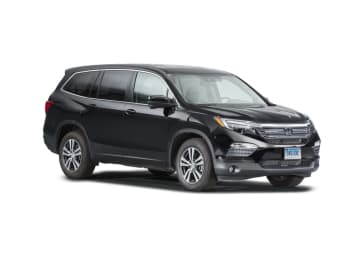
While it’s quick, comfortable, and refined, the Pilot is not exactly a joy to drive. Its three-row seating configuration, roomy cabin, and abundant interior storage make it an extremely functional vehicle. Power comes from a slick 280-hp, 3.5-liter V6 that returned 20 mpg overall in our tests of an EX-L with the standard six-speed automatic; in 2021 the nine-speed automatic became standard. We found the ride to be comfortable, but the Pilot had ungainly handling, doing little to hide the SUV’s bulk. The knobless touchscreen infotainment system is unintuitive to use. Front- and all-wheel drive are offered. All Pilots came standard with FCW and AEB with pedestrian detection; BSW and RCTW were standard on all trims except the base model.
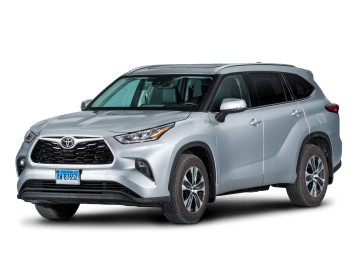
The fourth-generation Highlander has a comfortable ride and a smooth powertrain, with sound, secure handling. The smooth and punchy 295-hp V6 packs a lot of reserve power and gets a competitive 22 mpg overall. Both seven- and eight-passenger seating configurations are available. Either way, the second row is very roomy but the third row is tiny. We found the controls easy to use, and the standard Android Auto and Apple CarPlay compatibility is helpful. While FCW and AEB with pedestrian detection were standard, both BSW and RCTW were optional.
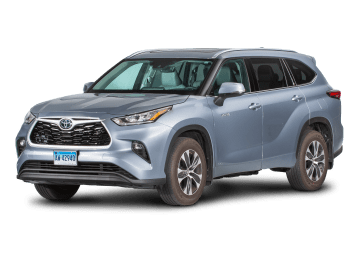
The Highlander Hybrid has most of the same qualities as the regular Highlander, such as its composed ride, roomy cabin, secure handling, and easy-to-use controls. But what it brings to the table is fuel efficiency. Although it feels less powerful, the hybrid gets an impressive 35 mpg overall from its 2.5-liter four-cylinder engine and continuously variable transmission powertrain. In addition, the Hybrid comes standard with BSW, along with FCW and AEB with pedestrian detection.
Consumer Reports is an independent, nonprofit organization that works side by side with consumers to create a fairer, safer, and healthier world. CR does not endorse products or services, and does not accept advertising. Copyright © 2024, Consumer Reports, Inc.




